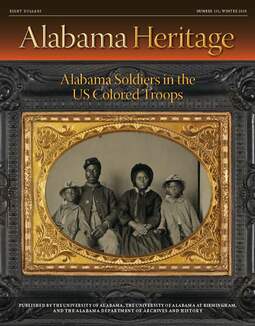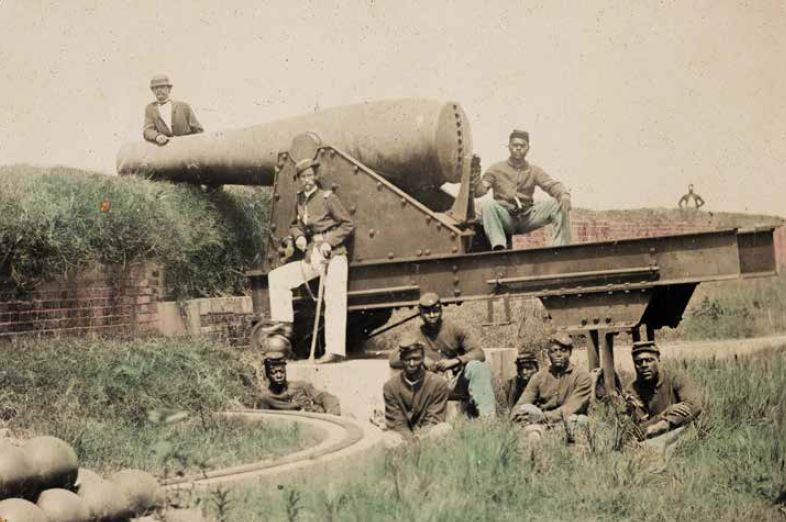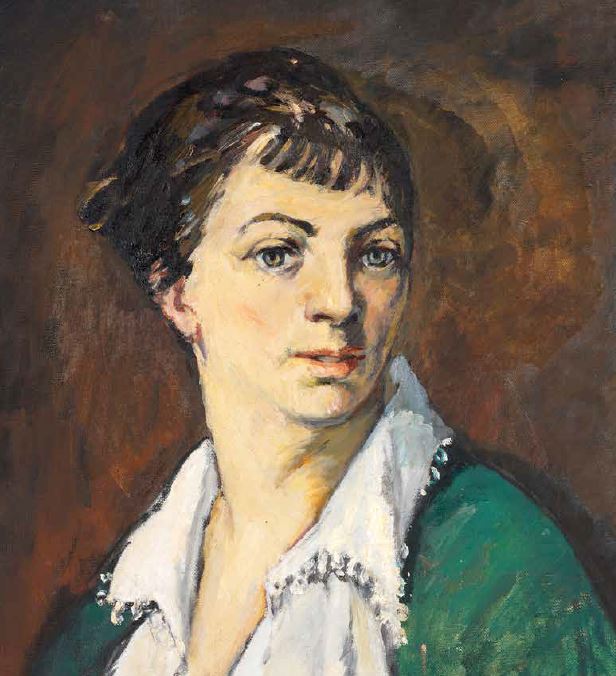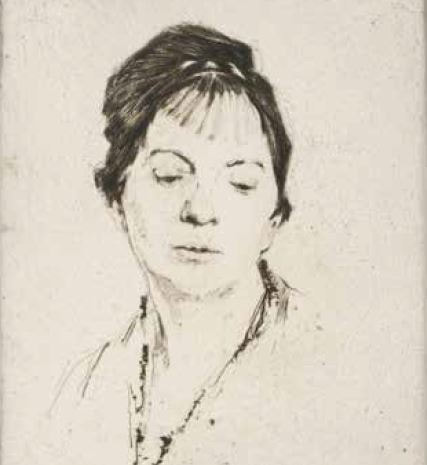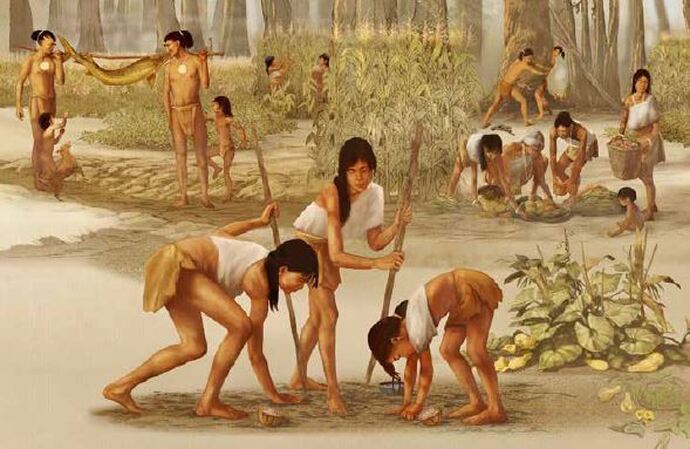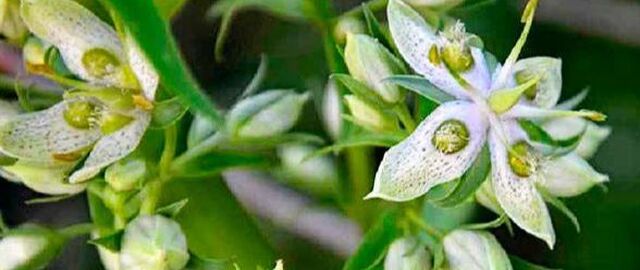|
On the cover: An unidentified USCT soldier and his
family. (Photo Courtesy of the Library of Congress) |
FEATURE ABSTRACTS
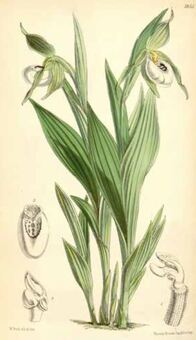 This 1869 botanical illustration
depicts the White Lady’s Slipper
(Cypripedium candidum). (Photo Courtesy of Wikimedia
Commons)
This 1869 botanical illustration
depicts the White Lady’s Slipper
(Cypripedium candidum). (Photo Courtesy of Wikimedia
Commons)
Alabama's Antebellum Herbal
Transactions of the Medical Association of the State of Alabama, 1851-1855
by L. J. Davenport
Though the Civil War was undoubtedly the country’s dominant nineteenth-century conflict, communities within the country had their own internal battles as people sought to establish themselves and their credibility, all while chronicling the bounty of the young nation. Members of one such group, doctors trained at medical schools, struggled to assert their expertise in light of the rise of Thomsonians—practitioners with inconsistent training and commitment to plant-based remedies. To establish their own credentials in this realm, the members of the Medical Association of the State of Alabama spent several years chronicling the state’s plant life, explaining how each specimen offered remedies and treatments for common ailments. L. J. Davenport, Alabama Heritage’s resident naturalist, explores these men and the volumes they produced, offering a fascinating glimpse of medical practice and general health of the young state.
About the Author
Larry Davenport, a native of Seattle, Washington, holds a PhD in biology from the University of Alabama. He has taught at Samford University in Birmingham, Alabama, since 1985, where he currently serves as Paul N. Propst Professor of Natural Sciences. In 2007, he was named Alabama Professor of the Year by the Carnegie Foundation for the Advancement of Teaching. Davenport is considered to be an expert on Alabama’s plant life; aquatic plants; wetlands; and rare, threatened and endangered species, including the Cahaba Lily. His interests also include the history of Alabama botany and the uses of medicinal plants. Since 1993, he has written a natural history column for Alabama Heritage. In 2010, twenty-five such columns were published as Nature Journal by the University of Alabama Press. In 2016, he co-authored Exploring Wild Alabama (also UA Press) with Kenneth M. Wills.
Additional Information
To learn more about medicine in Alabama, read more in this collection from the Encyclopedia of Alabama.
Transactions of the Medical Association of the State of Alabama, 1851-1855
by L. J. Davenport
Though the Civil War was undoubtedly the country’s dominant nineteenth-century conflict, communities within the country had their own internal battles as people sought to establish themselves and their credibility, all while chronicling the bounty of the young nation. Members of one such group, doctors trained at medical schools, struggled to assert their expertise in light of the rise of Thomsonians—practitioners with inconsistent training and commitment to plant-based remedies. To establish their own credentials in this realm, the members of the Medical Association of the State of Alabama spent several years chronicling the state’s plant life, explaining how each specimen offered remedies and treatments for common ailments. L. J. Davenport, Alabama Heritage’s resident naturalist, explores these men and the volumes they produced, offering a fascinating glimpse of medical practice and general health of the young state.
About the Author
Larry Davenport, a native of Seattle, Washington, holds a PhD in biology from the University of Alabama. He has taught at Samford University in Birmingham, Alabama, since 1985, where he currently serves as Paul N. Propst Professor of Natural Sciences. In 2007, he was named Alabama Professor of the Year by the Carnegie Foundation for the Advancement of Teaching. Davenport is considered to be an expert on Alabama’s plant life; aquatic plants; wetlands; and rare, threatened and endangered species, including the Cahaba Lily. His interests also include the history of Alabama botany and the uses of medicinal plants. Since 1993, he has written a natural history column for Alabama Heritage. In 2010, twenty-five such columns were published as Nature Journal by the University of Alabama Press. In 2016, he co-authored Exploring Wild Alabama (also UA Press) with Kenneth M. Wills.
Additional Information
To learn more about medicine in Alabama, read more in this collection from the Encyclopedia of Alabama.
Fighting for Freedom
Alabama's USCT Soldiers
by Robert S. Davis
Though the existence of the United States Colored Troops (USCT) during the Civil War remains relatively well-known, many of the details of these men’s experiences have long been obscure to the general public, known mainly to scholars. African American men joined the fighting for many reasons, but once enlisted, many of them faced discrimination from officers and even the military establishment. Approximately five thousand of these men hailed from Alabama. Some experienced combat, and others were used in different capacities away from the front lines, but all fought to secure the freedom they so fervently desired.
About the Author
Robert S. Davis is senior professor of history at Wallace State College in Hanceville, Alabama, where he began the Family & Regional History Program in 1992 to encourage local interest in family history in Alabama and the South. The program has classes in genealogy and a major library. A graduate of Piedmont College, the University of North Georgia, and the University of Alabama at Birmingham, Davis has published more than 1,300 works, including forty books and articles for scholarly journals. He received awards from the National Genealogical Society, the Society for State and Local History, the Sons of the American Revolution, and other organizations. Davis has spoken to hundreds of groups, including for the Alabama Humanities Council, and has appeared on television documentaries. He also reviews history books for the New York Journal of Books and has a column in the Georgia Genealogical Society Quarterly.
Additional Information
To learn more about the African American Troops, visit this site http://www.encyclopediaofalabama.org/article/h-2022
Alabama's USCT Soldiers
by Robert S. Davis
Though the existence of the United States Colored Troops (USCT) during the Civil War remains relatively well-known, many of the details of these men’s experiences have long been obscure to the general public, known mainly to scholars. African American men joined the fighting for many reasons, but once enlisted, many of them faced discrimination from officers and even the military establishment. Approximately five thousand of these men hailed from Alabama. Some experienced combat, and others were used in different capacities away from the front lines, but all fought to secure the freedom they so fervently desired.
About the Author
Robert S. Davis is senior professor of history at Wallace State College in Hanceville, Alabama, where he began the Family & Regional History Program in 1992 to encourage local interest in family history in Alabama and the South. The program has classes in genealogy and a major library. A graduate of Piedmont College, the University of North Georgia, and the University of Alabama at Birmingham, Davis has published more than 1,300 works, including forty books and articles for scholarly journals. He received awards from the National Genealogical Society, the Society for State and Local History, the Sons of the American Revolution, and other organizations. Davis has spoken to hundreds of groups, including for the Alabama Humanities Council, and has appeared on television documentaries. He also reviews history books for the New York Journal of Books and has a column in the Georgia Genealogical Society Quarterly.
Additional Information
To learn more about the African American Troops, visit this site http://www.encyclopediaofalabama.org/article/h-2022
The Anne Goldthwaite Nobody Knew
by May Lamar
Though lesser-known today, Montgomery’s Anne Goldthwaite established herself as a significant American artist. The Alabama-born visual artist was an etcher, painter, and longtime advocate for equal rights for women. Though she occupied a central position among the artists of her era—befriending Gertrude Stein and exhibiting work in the 1913 Armory Show—much of her life remains unknown to us today. Fortunately, her unfinished memoir and the recollections
of a ninety-year-old Montgomery resident help reveal Goldthwaite’s accomplishments, passions, and tragedies.
About the Author
May Lamar is a Montgomery native and a 1980 graduate of the University of Alabama. She is an award-winning newspaper reporter and advertising copywriter who enjoys researching and writing both fiction and private biographies. Previous works include: Hunting: The Southern Tradition (co-written by her husband, Rich Donnell with photography by Chip Cooper); Brother Sid, A Novel of Sidney Lanier; and Last of the Bosses, Monroe County’s Judge E.T. “Short” Millsap. Her current novel is Gifts, a fictional account of the painter Anne Goldthwaite and her family. May and her husband, author/publisher Rich Donnell are at home in Montgomery.
Additional Information
For more information about Anne Goldthwaite, please see https://americanart.si.edu/artist/anne-goldthwaite-1853
Correction
Dear Readers: In this article we forgot to include the complete caption information for two images from the Montgomery Museum of Fine Arts (mislabeled in the article as "Montgomery Museum of Art"). Here are the corrected credit lines:
p. 31 Anne Goldthwaite (American, 1869–1944), The Potter—School Study, ca. 1902, etching on paper, 11
7/8 x 8 7/8 inches, Montgomery Museum of Fine Arts, Montgomery, Alabama, Gift of Adelyn D.
Breeskin, 1982.16.7
p. 38 Anne Goldthwaite (American, 1869–1944), Southern Pines, ca. 1915, etching on paper, 6 x 7 inches,
Montgomery Museum of Fine Arts, Montgomery, Alabama, Gift of Richard and Lucy Goldthwaite,
1972.43
by May Lamar
Though lesser-known today, Montgomery’s Anne Goldthwaite established herself as a significant American artist. The Alabama-born visual artist was an etcher, painter, and longtime advocate for equal rights for women. Though she occupied a central position among the artists of her era—befriending Gertrude Stein and exhibiting work in the 1913 Armory Show—much of her life remains unknown to us today. Fortunately, her unfinished memoir and the recollections
of a ninety-year-old Montgomery resident help reveal Goldthwaite’s accomplishments, passions, and tragedies.
About the Author
May Lamar is a Montgomery native and a 1980 graduate of the University of Alabama. She is an award-winning newspaper reporter and advertising copywriter who enjoys researching and writing both fiction and private biographies. Previous works include: Hunting: The Southern Tradition (co-written by her husband, Rich Donnell with photography by Chip Cooper); Brother Sid, A Novel of Sidney Lanier; and Last of the Bosses, Monroe County’s Judge E.T. “Short” Millsap. Her current novel is Gifts, a fictional account of the painter Anne Goldthwaite and her family. May and her husband, author/publisher Rich Donnell are at home in Montgomery.
Additional Information
For more information about Anne Goldthwaite, please see https://americanart.si.edu/artist/anne-goldthwaite-1853
Correction
Dear Readers: In this article we forgot to include the complete caption information for two images from the Montgomery Museum of Fine Arts (mislabeled in the article as "Montgomery Museum of Art"). Here are the corrected credit lines:
p. 31 Anne Goldthwaite (American, 1869–1944), The Potter—School Study, ca. 1902, etching on paper, 11
7/8 x 8 7/8 inches, Montgomery Museum of Fine Arts, Montgomery, Alabama, Gift of Adelyn D.
Breeskin, 1982.16.7
p. 38 Anne Goldthwaite (American, 1869–1944), Southern Pines, ca. 1915, etching on paper, 6 x 7 inches,
Montgomery Museum of Fine Arts, Montgomery, Alabama, Gift of Richard and Lucy Goldthwaite,
1972.43
The Voyage of Ain't It 'Ell
by John S. Sledge
The Great Depression caused a wide range of unusual behavior among Americans, as they struggled to eek out their existence under challenging circumstances. Perhaps one of the more unusual responses to loss of employment came from Charles Wooding Wynn, a Selma resident. When Wynn lost his job in 1931, he made a bold decision: he would take to the water. With his wife by his side, Wynn set off on the Alabama River, living off the land (and water) and experiencing the kindness of his fellow Alabamians who, like him, were struggling to grasp the rapidly changing world around them.
About the Author
John S. Sledge is senior architectural historian with the Mobile Historic Development Commission and a member of the National Book Critics Circle. He is the author of seven books, including The Mobile River; These Rugged Days: Alabama in the Civil War; and most recently The Gulf of Mexico: A Maritime History.
Additional Information
To learn more about Steamboats in Alabama, read more here.
by John S. Sledge
The Great Depression caused a wide range of unusual behavior among Americans, as they struggled to eek out their existence under challenging circumstances. Perhaps one of the more unusual responses to loss of employment came from Charles Wooding Wynn, a Selma resident. When Wynn lost his job in 1931, he made a bold decision: he would take to the water. With his wife by his side, Wynn set off on the Alabama River, living off the land (and water) and experiencing the kindness of his fellow Alabamians who, like him, were struggling to grasp the rapidly changing world around them.
About the Author
John S. Sledge is senior architectural historian with the Mobile Historic Development Commission and a member of the National Book Critics Circle. He is the author of seven books, including The Mobile River; These Rugged Days: Alabama in the Civil War; and most recently The Gulf of Mexico: A Maritime History.
Additional Information
To learn more about Steamboats in Alabama, read more here.
DEPARTMENT ABSTRACTS
|
Alabama Makers
A Knitted Heritage: Reclaiming an Industry in the Former Sock Capital of the World By Caitlyn Bell Though Fort Payne, Alabama, once held the position of America’s biggest sock and hosiery manufacturer, the field declined, and the city lost its major industry. Gina Locklear grew up in a family of sock manufacturers, and she set out to reestablish the industry’s significant place in her hometown. Her success is clear through her company, Zkano, which works closely with small businesses—and whose very existence celebrates Fort Payne’s manufacturing heritage. About the Author Caitlyn Bell earned her bachelor’s degree in anthropology and religious studies from the University of Alabama, where she is currently earning her master’s degree in the religion and culture program in addition to a museum certificate. She is originally from Fort Payne, Alabama, and spent a portion of her high school years working in one of the few sock mills remaining in the city. |
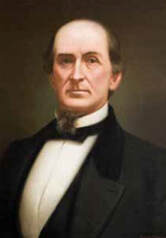 Gov. Robert Miller Patton
by Cornelius Hankins, 1907.
(Photo Courtesy of Alabama Department of Archives and History)
Gov. Robert Miller Patton
by Cornelius Hankins, 1907.
(Photo Courtesy of Alabama Department of Archives and History)
Alabama Governors
Robert Miller Patton
By Samuel L. Webb
Like many of Alabama’s early governors, Robert Miller Patton originally hailed from Virginia. However, his early years in Alabama helped shape his identity and his political career. As Alabama’s governor immediately following the Civil War, Patton reflected conflicting post-war circumstances, sometimes standing strongly for practices that only benefited whites and sometimes (likely from pragmatism, and often with some reluctance) advancing more inclusive legislation.
About the Author
Samuel L. Webb holds a JD from the University of Alabama School of Law and a PhD in history from the University of Arkansas. This department is drawn from Alabama Governors: A Political History of the State, second edition, edited by Webb and Margaret E. Armbrester (University of Alabama Press, 2014).
Robert Miller Patton
By Samuel L. Webb
Like many of Alabama’s early governors, Robert Miller Patton originally hailed from Virginia. However, his early years in Alabama helped shape his identity and his political career. As Alabama’s governor immediately following the Civil War, Patton reflected conflicting post-war circumstances, sometimes standing strongly for practices that only benefited whites and sometimes (likely from pragmatism, and often with some reluctance) advancing more inclusive legislation.
About the Author
Samuel L. Webb holds a JD from the University of Alabama School of Law and a PhD in history from the University of Arkansas. This department is drawn from Alabama Governors: A Political History of the State, second edition, edited by Webb and Margaret E. Armbrester (University of Alabama Press, 2014).
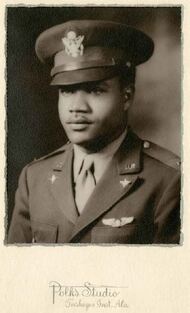
Behind the Image
The Renaissance Men from Tuskegee
By Frances Osborn Robb
A chance encounter with a photograph leads Alabama Heritage’s resident photography expert to discover a fascinating subject, an influential photographer, and the history that united them. The portrait of Louis Rayfield Purnell, a Tuskegee Airman and the Smithsonian Institution’s first black curator, was photographed by Prentice Herman Polk, another influential Tuskegee figure. The men’s encounter offers a compelling glimpse at the history of this institution and the influential legacies it shaped.
About the Author
Frances Osborn Robb is the contributing editor for the “Behind the Image” department of Alabama Heritage. She is the author of Shot in Alabama: A History of Photography, 1839–1941, and a List of Photographers (University of Alabama Press, 2017). She is passionate about historic photographs and thanks Dana Chandler, Tuskegee University Archivist, for his generous assistance.
The Renaissance Men from Tuskegee
By Frances Osborn Robb
A chance encounter with a photograph leads Alabama Heritage’s resident photography expert to discover a fascinating subject, an influential photographer, and the history that united them. The portrait of Louis Rayfield Purnell, a Tuskegee Airman and the Smithsonian Institution’s first black curator, was photographed by Prentice Herman Polk, another influential Tuskegee figure. The men’s encounter offers a compelling glimpse at the history of this institution and the influential legacies it shaped.
About the Author
Frances Osborn Robb is the contributing editor for the “Behind the Image” department of Alabama Heritage. She is the author of Shot in Alabama: A History of Photography, 1839–1941, and a List of Photographers (University of Alabama Press, 2017). She is passionate about historic photographs and thanks Dana Chandler, Tuskegee University Archivist, for his generous assistance.
From the Archives
The Creators of Life: Creek Women in Early Alabama
By Alex Colvin
During 2020, the centennial of women’s suffrage, the “From the Archives” columns during will focus on the important roles of women in Alabama history. This inaugural installment explores the role of women in Creek communities and illuminates the significance of matrilineal societies. Throughout, it highlights archival materials that help us understand the history of our state’s early inhabitants.
About the Author
Alex Colvin, PhD, is public programs curator at the Alabama Department of Archives and History.
The Creators of Life: Creek Women in Early Alabama
By Alex Colvin
During 2020, the centennial of women’s suffrage, the “From the Archives” columns during will focus on the important roles of women in Alabama history. This inaugural installment explores the role of women in Creek communities and illuminates the significance of matrilineal societies. Throughout, it highlights archival materials that help us understand the history of our state’s early inhabitants.
About the Author
Alex Colvin, PhD, is public programs curator at the Alabama Department of Archives and History.
Portraits & Landscapes
The Naheola Bridge
By Stephanie L. Robertson
Originally created to help ease commuting times for workers traveling between Black Belt counties, the Naheola Bridge was shared by trains and automobiles for a significant part of its history. Though the arrangement was precarious, miraculously no significant accidents took place. Today the bridge is used only by trains, but it still stands, a reminder of the region’s industrial history, the structures that arose from it, and the people at the center of it all.
About the Author
Choctaw County native Stephanie L. Robertson lives in Madison, Alabama, with her husband, James, and daughter, Elizabeth, and maintains a Southern lifestyle blog at www.sweetgumlife.com.
Additional Information
For more information on the bridge, see the Encyclopedia of Alabama: http://www.encyclopediaofalabama.org/article/m-8810.
The Naheola Bridge
By Stephanie L. Robertson
Originally created to help ease commuting times for workers traveling between Black Belt counties, the Naheola Bridge was shared by trains and automobiles for a significant part of its history. Though the arrangement was precarious, miraculously no significant accidents took place. Today the bridge is used only by trains, but it still stands, a reminder of the region’s industrial history, the structures that arose from it, and the people at the center of it all.
About the Author
Choctaw County native Stephanie L. Robertson lives in Madison, Alabama, with her husband, James, and daughter, Elizabeth, and maintains a Southern lifestyle blog at www.sweetgumlife.com.
Additional Information
For more information on the bridge, see the Encyclopedia of Alabama: http://www.encyclopediaofalabama.org/article/m-8810.
Adventures in Genealogy
The Seventh-Floor Records Project
By Donna Cox Baker
Many significant records languish, forgotten or abandoned to attics, basements, and other sites ill-suited for preservation. However, when the Tuscaloosa Genealogical Society discovered that such a fate had befallen court records from the city’s early years, they leapt to work. With assistance from county officials, TGS labored to preserve these records and the valuable genealogical information they hold.
About the Author
Donna Cox Baker is the director of Alabama Heritage. She wrote Zotero for Genealogy: Harnessing the Power of Your Research and blogs at gegbound.com. She thanks Jan Hutchison and the Tuscaloosa Genealogical Society for their help with this article.
The Seventh-Floor Records Project
By Donna Cox Baker
Many significant records languish, forgotten or abandoned to attics, basements, and other sites ill-suited for preservation. However, when the Tuscaloosa Genealogical Society discovered that such a fate had befallen court records from the city’s early years, they leapt to work. With assistance from county officials, TGS labored to preserve these records and the valuable genealogical information they hold.
About the Author
Donna Cox Baker is the director of Alabama Heritage. She wrote Zotero for Genealogy: Harnessing the Power of Your Research and blogs at gegbound.com. She thanks Jan Hutchison and the Tuscaloosa Genealogical Society for their help with this article.
Nature Journal
Columbo’s Viral Voyage
By L. J. Davenport
Larry Davenport offers a detailed introduction to one of the state’s significant medicinal plants, columbo (Frasera caroliniensis), in conjunction with his feature article on the Alabama physicians’ compilation of Alabama herbals. Davenport discusses the plant’s characteristics, its medicinal and cultural significance, and even the origins of its name. (Spoiler alert: it wasn’t named for the explorer.)
About the Author
Larry Davenport is Paul N. Propst Professor of Natural Sciences at Samford University and co-author (with Ken Wills) of Exploring Wild Alabama (University of Alabama Press, 2016).
For Additional Information
To purchase books by Larry Davenport, see the following links.
Nature Journal http://www.uapress.ua.edu/product/Nature-Journal,7241.aspx
Exploring Wild Alabama http://www.uapress.ua.edu/product/Exploring-Wild-Alabama,6429.aspx
Columbo’s Viral Voyage
By L. J. Davenport
Larry Davenport offers a detailed introduction to one of the state’s significant medicinal plants, columbo (Frasera caroliniensis), in conjunction with his feature article on the Alabama physicians’ compilation of Alabama herbals. Davenport discusses the plant’s characteristics, its medicinal and cultural significance, and even the origins of its name. (Spoiler alert: it wasn’t named for the explorer.)
About the Author
Larry Davenport is Paul N. Propst Professor of Natural Sciences at Samford University and co-author (with Ken Wills) of Exploring Wild Alabama (University of Alabama Press, 2016).
For Additional Information
To purchase books by Larry Davenport, see the following links.
Nature Journal http://www.uapress.ua.edu/product/Nature-Journal,7241.aspx
Exploring Wild Alabama http://www.uapress.ua.edu/product/Exploring-Wild-Alabama,6429.aspx
Article Update
The Mon Louis Island Schoolhouse Renovation Project
By Patricia Crawford
The founder and president of the Mon Luis Schoolhouse Renovation Project, updates readers on the project, reviews the schoolhouse’s history, and corrects some misinformation that has surrounded the structure. This feature was originally published in Issue 131 and readers can find more details on the update here.
About the Author
Patricia Crawford is the founder and president of the Mon Luis Island Schoolhouse Renovation Project.
The Mon Louis Island Schoolhouse Renovation Project
By Patricia Crawford
The founder and president of the Mon Luis Schoolhouse Renovation Project, updates readers on the project, reviews the schoolhouse’s history, and corrects some misinformation that has surrounded the structure. This feature was originally published in Issue 131 and readers can find more details on the update here.
About the Author
Patricia Crawford is the founder and president of the Mon Luis Island Schoolhouse Renovation Project.
Reading the Southern Past
The Rise and Fall of “Separate but Equal”
By Stephen Goldfarb
This quarter’s installment of “Reading the Southern Past” considers the legacy of Plessy v. Furguson, the infamous 1896 court case. Under review are Steve Luxenberg’s Separate: The Story of Plessy v. Ferguson, and America’s Journey from Slavery to Segregation (W. W. Norton, 2019), Richard Kluger’s Simple Justice: The History of Brown v. Board of Education and Black America’s Struggle for Equality (2nd edition, Alfred A. Knopf, 2004), and Margaret Edds’s We Face the Dawn (University of Virginia Press, 2018).
About the Author
Stephen Goldfarb holds a PhD in the history of science and technology. He retired from a public library in 2003.
For Additional Information
For more information about (and links to purchase) Steve Luxenberg’s Separate, please see https://www.steveluxenberg.com/books/separate/.
Simple Justice by Richard Kluger is available for purchase at https://www.penguinrandomhouse.com/books/93824/simple-justice-by-richard-kluger/.
Margaret Edds’s book We Face the Dawn is available for purchase at https://www.upress.virginia.edu/title/5145.
The Rise and Fall of “Separate but Equal”
By Stephen Goldfarb
This quarter’s installment of “Reading the Southern Past” considers the legacy of Plessy v. Furguson, the infamous 1896 court case. Under review are Steve Luxenberg’s Separate: The Story of Plessy v. Ferguson, and America’s Journey from Slavery to Segregation (W. W. Norton, 2019), Richard Kluger’s Simple Justice: The History of Brown v. Board of Education and Black America’s Struggle for Equality (2nd edition, Alfred A. Knopf, 2004), and Margaret Edds’s We Face the Dawn (University of Virginia Press, 2018).
About the Author
Stephen Goldfarb holds a PhD in the history of science and technology. He retired from a public library in 2003.
For Additional Information
For more information about (and links to purchase) Steve Luxenberg’s Separate, please see https://www.steveluxenberg.com/books/separate/.
Simple Justice by Richard Kluger is available for purchase at https://www.penguinrandomhouse.com/books/93824/simple-justice-by-richard-kluger/.
Margaret Edds’s book We Face the Dawn is available for purchase at https://www.upress.virginia.edu/title/5145.
